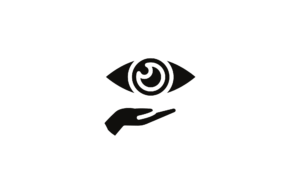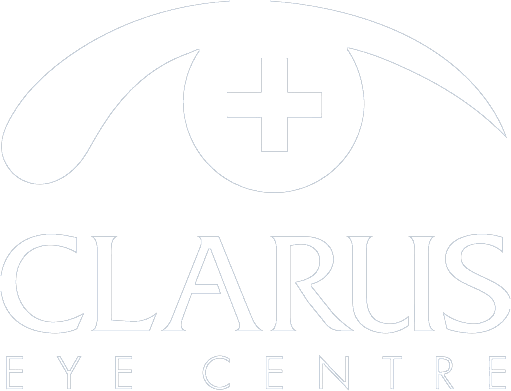How does the Light Adjustable Lens work?
The unique feature of the Light Adjustable Lens is that the shape and focusing characteristics can be changed after implantation in the eye using an office-based UV light source called a Light Delivery Device or LDD. The Light Adjustable Lens itself has special particles (called macromers), which are distributed throughout the lens. When ultraviolet (UV) light from the LDD is directed to a specific area of the lens, the particles in the path of the light connect with other particles (forming polymers). The remaining unconnected particles then move to the exposed area. This movement causes a highly predictable change in the curvature of the lens. The new shape of the lens will match the prescription you selected during your eye exam.
What should I expect in the period after surgery?
Please follow all instructions provided to you by your eye doctor and staff, including wearing of the UV-blocking glasses that will be provided to you. As with any cataract surgery, your vision may not be perfect after surgery. While your eye doctor selected the lens he or she anticipated would give you the best possible vision, it was only an estimate. Fortunately, you have selected the Light Adjustable Lens! In the next weeks, you and your eye doctor will work together to optimize your vision. Please make sure to pay close attention to your vision and be prepared to discuss preferences with your eye doctor.
Why do I have to wear UV-blocking glasses?
The UV-blocking glasses you are provided with protect the Light Adjustable Lens from UV light sources other than the LDD that your doctor will use to optimize your vision. Exposing the Light Adjustable Lens to other UV light sources will potentially change the lens correction in an uncontrolled manner. If you do not wear the provided UV-blocking eyewear, your vision may not improve or it could get worse. If this happens, please contact your physician.
How long do I have to wear the UV-blocking glasses?
The UV-blocking glasses must be worn at all times until your eye doctor tells you that you no longer need to wear them (usually 24 hours after your final light treatment). Total wear is typically about 4-5 weeks in duration, however, this may vary depending on the number of light treatments delivered.
I have a special event to attend in-between light treatments, do I really have to wear the UV-blocking glasses?
Yes, you must wear them all waking hours to prevent uncontrolled changes to the Light Adjustable Lens. It is important to think about the time period over which you must wear the UV-blocking glasses and any commitments that you may have. It may be best to schedule your surgery and treatments around these commitments.
Can I wear my regular sunglasses that have UV protection?
No. You must wear the UV-blocking glasses provided to you. These glasses have a special protective coating that no other glasses have.
Which pair of UV-blocking glasses should I wear if it is dark outside?
You must wear a dark pair of UV-blocking glasses during daylight hours, even if it is overcast. The clear pair can only be worn outside after sundown.
What happens if I lose or break my UV-blocking glasses?
Please contact our clinic as soon as possible if one of your two pairs of UV-blocking glasses are lost, damaged or unwearable, and then continue to wear the other pair. If both pairs are lost or damaged, wear the darkest sunglasses you have and contact your eye doctor/clinic.
What can or can I not do after surgery?
Showering - If there is a window or possible direct sunlight in your shower, please wear the UV-blocking glasses in the shower. If there is no direct sunlight, you do not need to wear your UV-blocking glasses when you shower. However, please put them on immediately afterward.
Sports - Your eye doctor will advise you when you can return to sports. Your return to more impactful activities may need to be delayed until all light treatments are complete to guarantee a stable Light Adjustable Lens for light treatments.
Tanning Studio - A tanning studio bed is a very strong source of UV light, and should be avoided until all light treatments are complete and you have been advised that you can remove your UV-blocking glasses.
Makeup - Your eye doctor will advise you when you can return to wearing eye makeup. Be careful when removing eye makeup and do not place excessive pressure on the eye. Permanent makeup should be delayed until the eye is considered fully healed by your eye doctor.
Travel - Travel is not impacted. Be sure to remember all of your UV-blocking glasses and wear at all times. Be particularly diligent in protecting the eyes from UV sources in unfamiliar environments.
Work - Work is not impacted unless your profession puts you at a higher risk of UV exposure. Please remember to wear your UV-blocking glasses at work until you are told by your eye doctor that it is no longer necessary.
Laser Hair Removal - It is recommended that you wait until all light treatments are complete and you have been advised that you can remove your UV-blocking glasses before proceeding with hair removal (IPL) treatments (different IPL devices use different wavelengths). This should include other facial beauty treatments that use light sources.
What should I do if I forgot to wear my UV-blocking glasses?
It is very important that you do not forget to wear your UV-blocking glasses. However, if you do forget, please put them on as soon as you remember.
How many total light treatments will I need?
A minimum of two light treatments — each lasting approximately 90 seconds — are required. The total number of light treatments is based on the achievement of the desired visual outcome that you and your doctor selected. Once you have achieved your final optimal vision, the lens power is permanently locked with a final light treatment to prevent any further changes.
How long do the light treatments last?
Each light treatment will last between 8 and 120 seconds, with the average being approximately 90 seconds. Variation in time is dependent on the type of treatment performed.
Are the light treatments painful?
Numbing drops will be applied to your eye, and there may be some mild pressure or discomfort. However, light treatments should not be painful.
What should I expect after each light treatment?
Your vision may be blurry immediately after each treatment due to a gel used during application of the light treatment, but this should resolve quickly. Additionally, your eye may be dilated for the treatment which may require wearing tinted glasses for a few hours. It may take approximately 24 hours after each light treatment to notice an improvement in your vision. The light from the LDD may also cause a temporary or long-lasting pink or red afterimage, which is common with a light source directed to the eye. This tinge to your vision is especially noticeable on things that normally look white.

